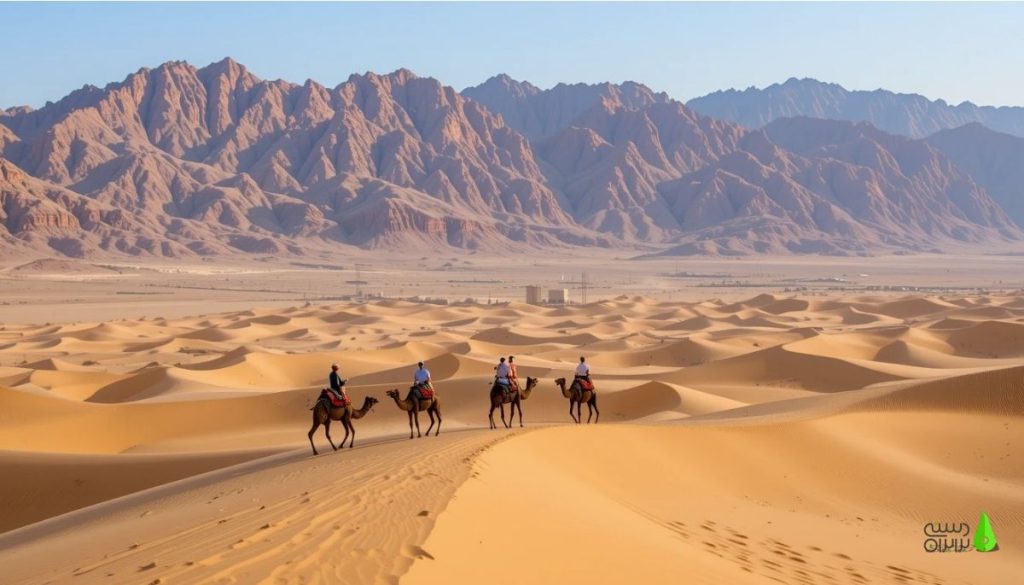
Iran desert tours are a pathway not to barren wastelands, but to living sand. They are alive with whispering dunes that shift like restless giants, salt-crusted plains that shimmer like shattered glass, and star-soaked skies so vivid they feel within arm’s reach. These sands have cradled ancient caravanserais for centuries, sheltered nomadic tribes, and guarded secrets older than Persia. Discover a unique Iran tour package that takes travelers to this raw manifestation of beauty and soul-stirring solitude. Let’s see what sets Iranian deserts apart:
Top Destinations for Your Iran Desert Tour Adventures
Iran’s deserts are a tapestry of contrasts—salt flats dissolve into towering dunes, and ancient caravanserais rise like mirages from the sand. To navigate this vastness, we’ve curated the most awe-inspiring destinations that define a true desert adventure. Whether you seek Martian-like rock formations or starry nights unspoiled by light, these landscapes will etch themselves into your memory.
Shahdad Desert & the Kaluts; Kerman Province
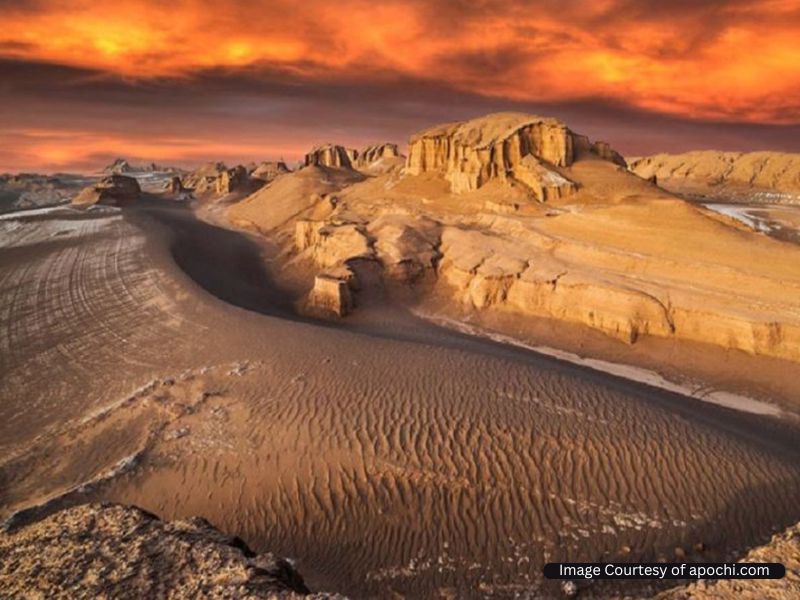
The Kaluts are Iran’s desert crown jewel, a UNESCO World Heritage Site. By day, hike through corridors of towering sandstone; by night, sleep under constellations so bright they cast shadows. Pro tip: Visit at dawn when the rising sun sets the rocks ablaze in hues of copper and gold.
Nearby Attractions:
- Shafiabad Village: Date palms irrigated by 3,000-year-old qanats (underground aqueducts).
- Shahdad Handicrafts: Black pottery forged from desert clay.
Local Secret: At sunset, the Kaluts emit a faint hum—locals say it’s the desert “singing.”
Mesr Desert (The Golden Sea); Isfahan Province
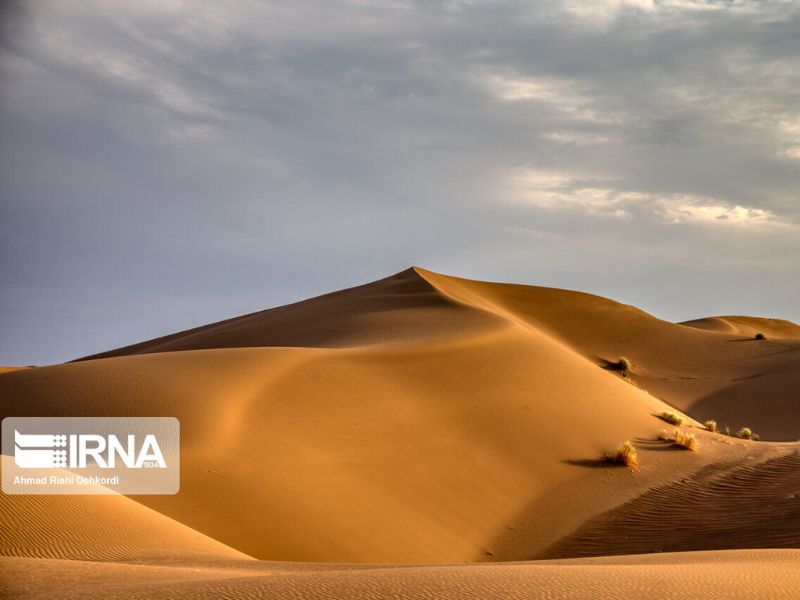
Mesr’s dunes, likened by poets to “the skin of a sleeping lion,” are best climbed at sunset. Stay at a rustic eco-camp like Kohan Abad, where owner Reza serves kalleh pacheh (a hearty sheep’s head stew) to brave guests.
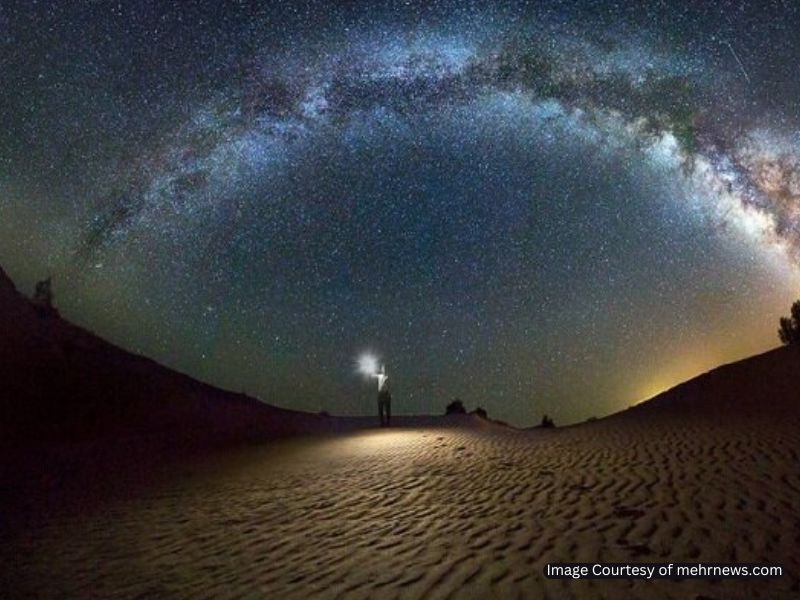
Nearby Attractions:
- Farahzad Village: Date palm orchards and traditional mudbrick homes.
- Khur Salt Lake: A shimmering expanse reflecting the desert sky.
- Amir Abad District: Sand dunes dotted with tamarisk shrubs, 2 km from Mesr Village
Haj Aligholi Desert; Semnan Province
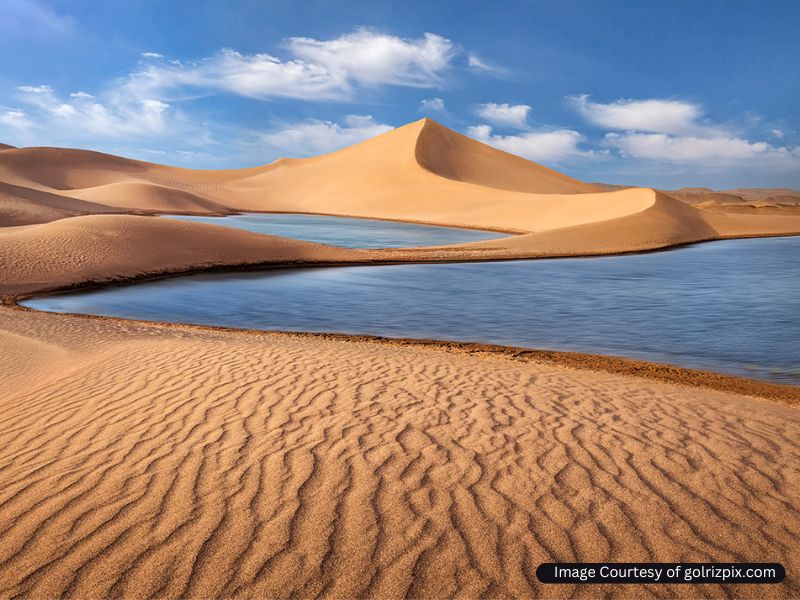
A sea of golden dunes is interrupted by jagged salt flats, and Haj Aligholi feels like a desert caught mid-transformation. Here, the wind sculpts dunes into waves that seem to crash against the Alborz Mountains.
Nearby Attractions:
- Aliabad Caravanserai: A 16th-century Silk Road relic where traders once bartered saffron.
- Abr Forest: A mist-shrouded “cloud forest” just 2 hours north—a surreal contrast to the desert.
Pro Tip: Visit in April to see wild tulips blooming along the desert’s edge.
Darak Desert; Sistan & Baluchestan Province
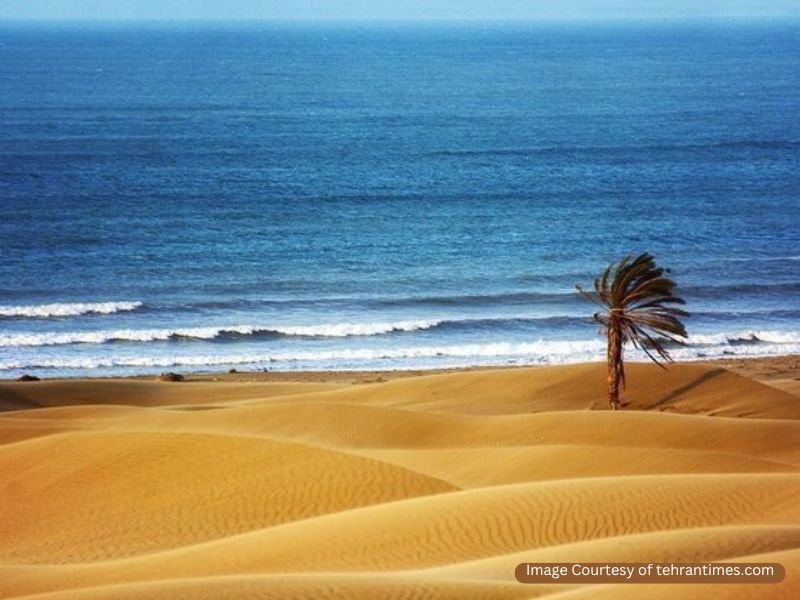
Where the Persian Gulf’s turquoise waves lick the desert’s amber sands, Darak is a collision of opposites. At low tide, wander tidal pools teeming with crabs, then climb dunes overlooking the sea.
Nearby Attractions:
- Rainbow Mountains: Striped hills near Darak Village, painted in ochre, violet, and sulfur-yellow.
- Hara Mangroves: Kayak through salt-tolerant forests where herons nest at dusk.
Local Secret: Full moons here create a “silver path” on the water—perfect for midnight strolls.
Rig-e Jenn; Semnan & Isfahan Provinces
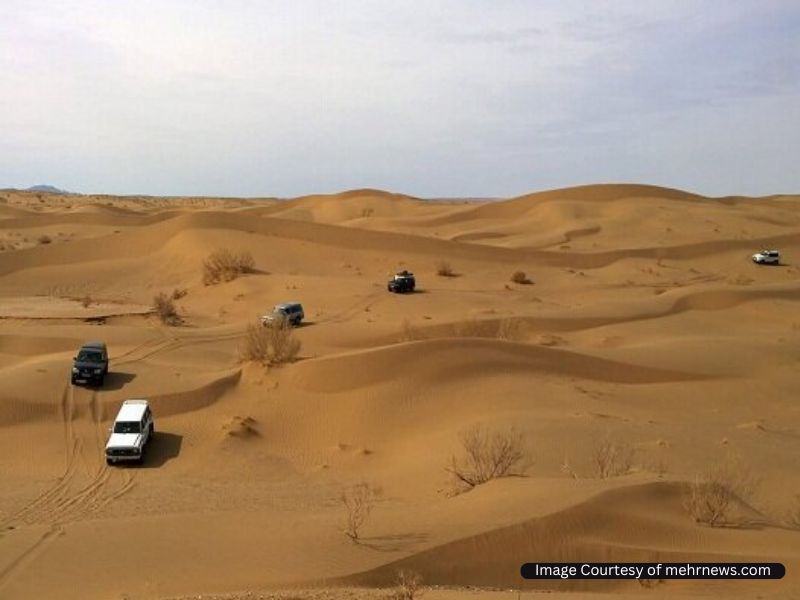
Known as the “Haunted Desert,” Rig-e Jenn’s shifting dunes are steeped in folklore. Locals whisper that jinns (spirits) mislead travelers—a myth born from its disorienting, maze-like terrain.
Nearby Attractions:
- Meymand Cave Village: UNESCO-listed troglodyte homes carved into cliffs.
- Garmeh Oasis: Sip pomegranate tea in a 1,000-year-old mud-brick guesthouse.
Pro Tip: Hire a Baluch guide—their ancestral navigation skills defy the desert’s tricks.
Bardaskan Playa; Khorasan-e Razavi Province
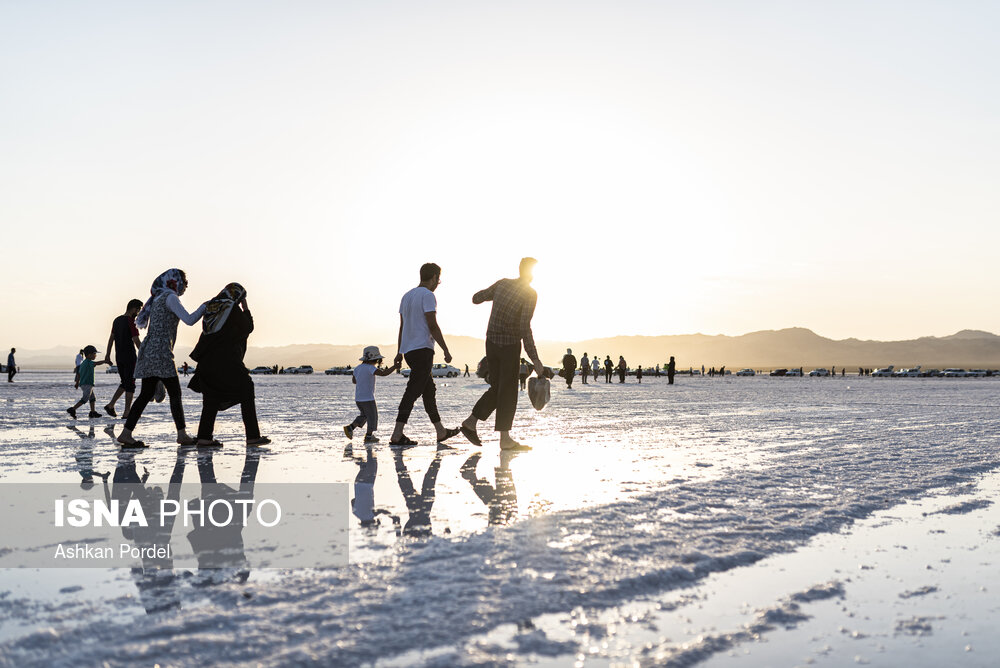
This dried lake is a natural attraction near Bardaskan County. It’s a flat land that is dry and hot most of the year, but has 95 frost days a year. The lake does not have plant life, but certain desert vegetation grows in the bordering areas.
A flat and vast salt desert feels like walking on a frozen lake. Crusted salt crystals glitter underfoot, and mirages dance on the horizon like ghostly caravans.
Nearby Attractions:
- Aliabad Tower: This is a 14th-century historical attraction near Bardaskan County, nearly 60 feet tall (18 meters). Its design is based on the Zoroastrian architecture of Dakhma.
- Tappe Choopan (Shepard Mound): These historical mounds near Ali Beig Village in Bardaskan County. They date back to the second millennium B.C.E.,
Maranjab Desert; Isfahan Province
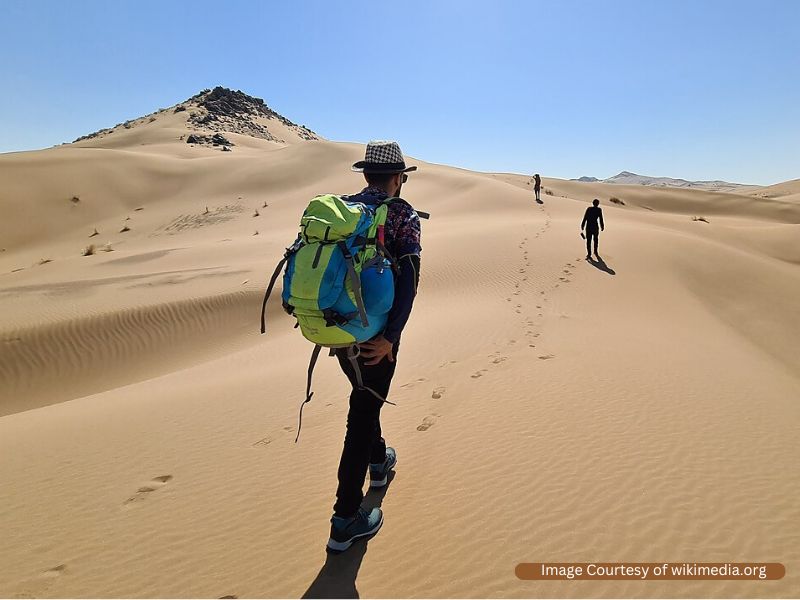
Follow the ghostly footprints of Silk Road merchants to Maranjab’s salt lakes and mud-brick caravanserais. Don’t miss the chance to float in its hypersaline waters—a surreal experience akin to drifting on the moon.
Nearby Attractions:
- Shah Abbasi Caravanserai: A 17th-century Silk Road inn with arched chambers and starlit courtyards.
- Sargardan Island: A volcanic “wandering island” in Namak Lake, famed for its shifting illusions.
- Kelang Mountain: Hiking trails offering panoramic views of salt flats and dunes.
Varzaneh; Isfahan Province
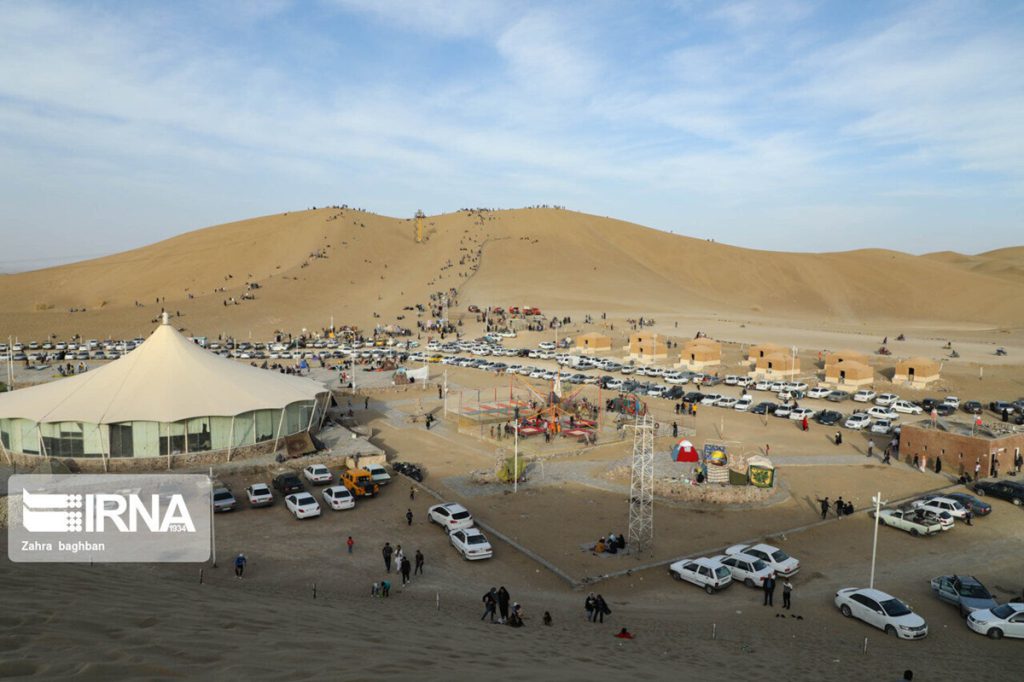
Varzaneh’s crimson dunes lure thrill-seekers with sandboarding and 4×4 safaris. For slower-paced exploration, eco-camps serve dizi—a lamb stew slow-cooked underground.
Nearby Attractions:
- Soha Lake: A tranquil oasis surrounded by tamarisk trees, ideal for birdwatching.
- Gambil Gorge: A dramatic canyon with wind-carved rock formations.
- Zoroastrian Fire Temples: Ancient sites in nearby Chupanan Village.
Why Choose Iran Desert Tours?
The deserts of the Iranian plateau are home to unique wildlife, incredible geographic features, and some of the world’s least light-polluted night sky photography locations.
Landscapes That Defy Imagination
Imagine standing atop the Kaluts of Shahdad Desert—a labyrinth of wind-sculpted towers that resemble a forgotten Martian city. Or drifting across the golden waves of the Mesr Desert, where the silence is broken only by the creak of a camel’s gait. Iran’s deserts are a masterclass in extremes: the Dasht-e Lut holds the title of Earth’s hottest recorded temperature (a blistering 80.8°C), while Maranjab’s salt lakes mirror the sky like liquid mercury.
But it’s not just about scale. It’s the details: the way sunlight filters through cracks in 1,000-year-old caravanserais, the crunch of salt underfoot in Dasht-e Kavir, or the sudden splash of green where a hidden spring defies the arid logic of the land.
A Culture Carried by the Wind
This isn’t just a tour—it’s a conversation. Sip cardamom-spiced tea with Baluch nomads, their wool tents dotted like mushrooms across the dunes. Listen to village elders in Varzaneh spin tales of Silk Road traders who once bartered spices beneath these stars. The desert teaches patience, and its people will teach you how to listen.
When to Go on Iran Desert Tours: Timing Your Desert Escape
Spring (March–May) and Autumn (October–December) are ideal—think crisp mornings (10–15°C) and balmy afternoons (25–30°C). Avoid summer’s furnace-like heat (June–August), when temperatures can soar above 50°C. Winter nights dip below freezing, but the stark beauty of frost-kissed dunes is worth the chill for photographers.
Personal anecdote: During a December trip to Dasht-e Kavir, I woke to find the desert dusted with snow—a rare moment locals call “barf-e roooye gandom” (“snow on wheat”), though no wheat grows here. Magic needs no logic.
What to Expect on Your Tour
A desert tour in Iran is less about ticking off sights and more about surrendering to rhythm—the sway of a camel’s gait, the crunch of salt underfoot, the slow unfurling of stars. Days here are shaped by elemental simplicity: sunrises that paint the sands gold, shared meals with nomadic families, and nights where silence feels like its own language. Below, we unravel the experiences that await.
Activities on Iran Desert Tours
- Camel Treks: Traverse dunes the old-fashioned way, swaying to the rhythm of a “desert ship.” Opt for a sunset ride—the golden hour here lasts lifetimes.
- Stargazing: With near-zero light pollution, the Milky Way feels close enough to touch. Local guides highlight constellations tied to Persian myths, like Shekar-e Ghavamin (“Hunter of the Sky”).
- Nomadic Homestays: Sleep in a kheimeh (nomadic tent) and learned to bake bread in ash ovens. In Garmeh, I kneaded dough with Zahra, a grandmother who joked, “In the desert, even bread has wrinkles.”
Accommodation: From Rustic to Regal
In the desert, where the horizon stretches endlessly, where you rest your head becomes part of the story.
- Forget generic hotels: Sleep in restored caravanserais like the Ribat of Zein-o-Din, a 400-year-old Silk Road pitstop where echoes of camel bells linger. Or opt for a “star bed” in Mesr—a rooftop mattress under an open sky.
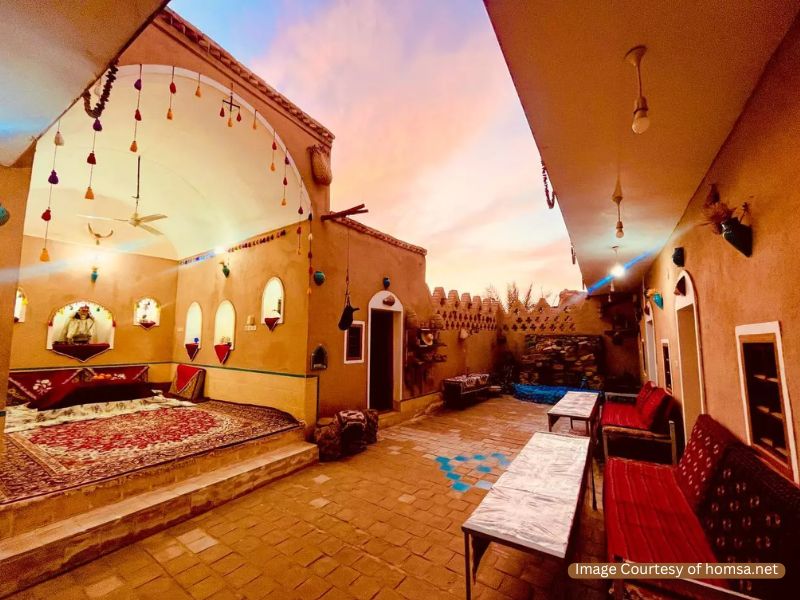
- New in 2025: Luxury camp; Silk Road Glamping offers solar-powered tents with Persian carpets and private terraces. Yes, you can Instagram the stars and have hot showers. Darak Beach Camps, Sleep in reed huts where the desert meets the sea, lulled by waves and wind.
A Feast for the Senses
Taste gheimeh (split-pea stew) simmered over firepits, and sip doogh (yogurt-mint drink) to beat the heat. Vegetarian? No problem—Iran’s love for herbs and legumes shines in dishes like kashk-e bademjan (eggplant dip).
Must-try: In Kerman, desert guides pack Kolompeh (ِCookies filled with dates) for hikes—crunchy, rosewater-scented fuel for the soul.
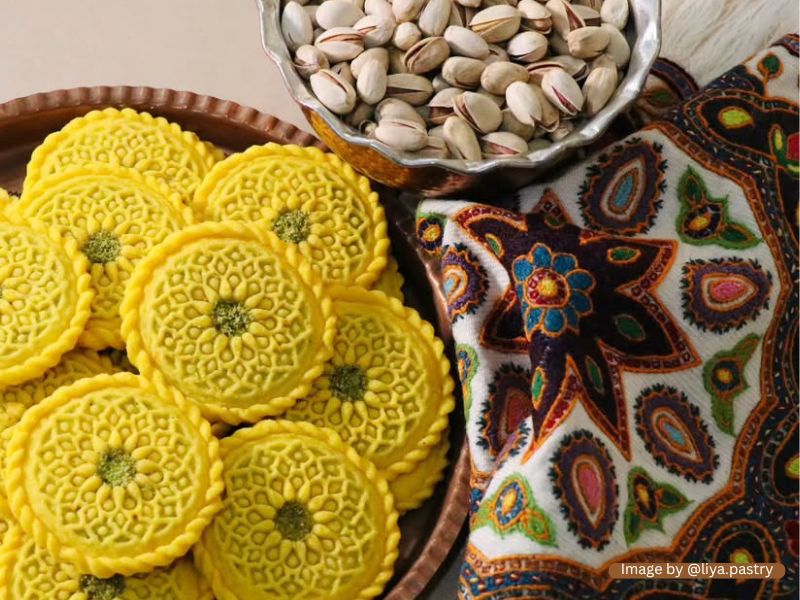
Iran Desert Tours Survival Guide: Tips from a Local
- Dress Like a Nomad: Lightweight linen, a wide-brimmed hat, and closed-toe shoes are non-negotiable. Ladies, pack a scarf for sun protection (and cultural respect). Pro tip: Wear socks—sand can scorch feet through shoe seams!
- Water Is Life: Carry 3–4 liters per day. Trust me—dehydration sneaks up faster than a sandstorm.
- Leave No Trace: Pack out all trash. These deserts have survived millennia; let’s keep them pristine.
Beyond the Dunes: Destinations to Visit After/Before Desert Tours
The deserts of Iran are not isolated wonders—they’re threads in a richer tapestry. After days of solitude, dive into the pulse of nearby cities where history hums through bazaars and mosques. These pairings balance the desert’s stark beauty with Persia’s cultural opulence, creating a journey long after the sand shakes from your boots.
- Yazd: Wander the adobe alleys of this UNESCO-listed city, home to Zoroastrian fire temples and badgirs (ancient windcatchers). Try baghlava soaked in rose syrup at Haj Khalifeh Ali Rahbar, a 150-year-old sweetshop.
- Isfahan: After the desert’s silence, dive into Naqsh-e Jahan Square’s bazaars’ symphony. Don’t miss the Shah Mosque’s turquoise dome at twilight.
- Kerman: Explore the 1,000-year-old Rayen Citadel, a mud-brick fortress rising from the Dasht-e Lut. Then, cool off with faloodeh (rosewater sorbet) at Vakil Bazaar.
- Hormoz Island: After Darak Desert, explore this psychedelic island’s red soil and artist colonies.
Ready to Walk on Desert Sands?
Iran’s deserts don’t just change your itinerary—they change you. They teach you that emptiness is an illusion, that silence has a texture, and that the most profound journeys are those that strip away the noise. So, lace up your boots, pack your sense of wonder, and let the sands write your story.
FAQs: Your Iran Desert Queries, Answered
Is Iran safe for desert travel?
Absolutely. Guided tours ensure safety, and locals are famously hospitable. Stick to marked trails, though—getting lost in 4,800 sq/km of Lut Desert is not an adventure.
Are there wildlife sightings in Iran desert tours?
Look for sand cats at dawn, migratory flamingos in Mesr’s lakes (spring only), and beetles that “surf” dunes to survive the heat.
Are there restroom facilities in the desert?
Eco-camps have basic facilities, but trekkers must follow “leave no trace” principles. Guides provide portable toilets for multi-day tours.
How physically demanding are desert tours?
Most tours cater to all fitness levels. Shorter hikes (2–3 hours) are common, but 4×4 safaris or camel rides offer alternatives. When booking, mention mobility needs.
Are there insects or snakes to worry about on Iran desert tours?
Scorpions and snakes exist but rarely appear near campsites. Guides teach safe practices (e.g., shaking out shoes). Insect repellent is recommended at dawn and dusk.












